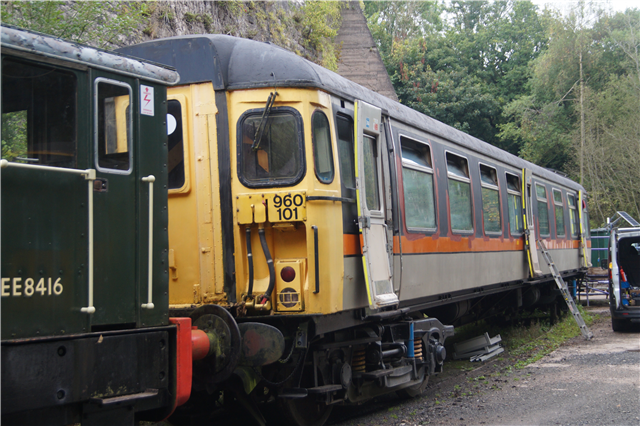The British Rail Class 309 "Clacton Express" electric multiple units (EMUs) were built by British Rail (BR) York Carriage Works from 1962–1963. They were initially classified as Class AM9 before the introduction of TOPS. These units were the first express 25 kV alternating current (AC) units to be built by British Rail and were their first EMUs capable of 100 mph.
Twenty-four units were built in three different configurations: 601–608 – Two-car units (309/1) 611–618 – Four-car units containing a griddle car (309/2) 621–627 – Four-car units (309/3)
Each unit had identical electrical equipment. The original concept called for increasing the power-to-weight ratio when strengthening trains from eight to ten cars in peak periods using the 2-car units, in order to make the peak timetable more resilient.
Following withdrawal from normal service, three units were transferred to Eastleigh works: numbers 616, 617 and 624. In 2001, two of these units were converted to Class 960 departmental units for cab-signalling tests at the Old Dalby test track. They were reduced in length to 3 cars and painted in a blue and white livery. They were withdrawn in 2004, following completion of the tests, and stored at MoD Pig's Bay, near Shoeburyness, Essex, until early 2009 when they entered preservation. The third unit, 617, was used as a spares donor and sat derelict at Eastleigh until it was scrapped in August 2004. Finally, one vehicle from 309623 survives, TSO purchased by West Coast Railways in 2003 for eventual spares use, however has been sat to this day unrestored at Carnforth MPD Still in its North West Regional Railways colours.
